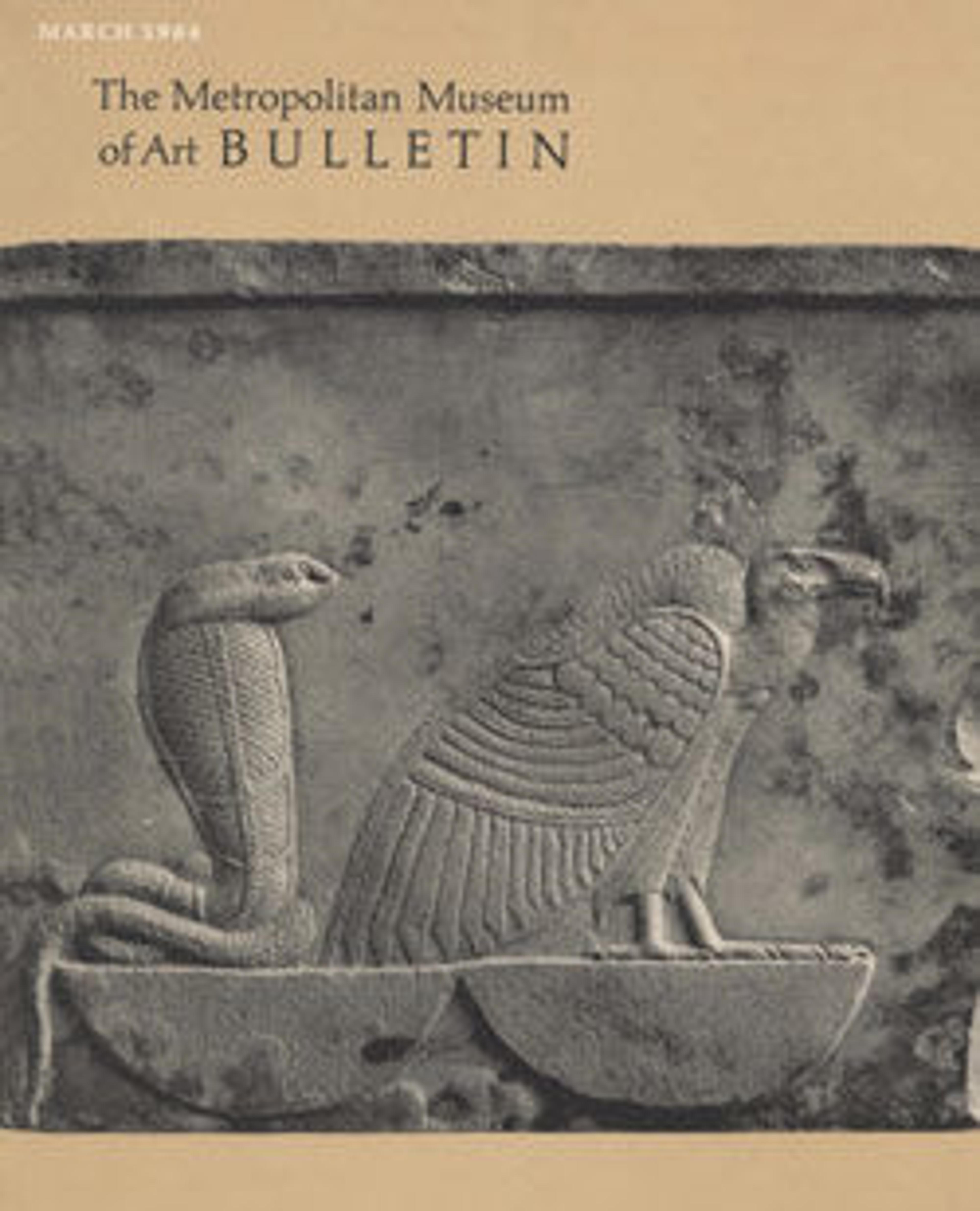Ring with Uninscribed Scarab
Gold wires are drawn through the perforation hole of a turquoise scarab, and wound about at each end of a gold ring. Swivel rings usually hold seals that could be rotated in the right direction in order to impress clay used to seal an object, much like sealing wax. Though uninscribed and thus never used as sealing device, this small turquoise scarab is set in such a finger ring; it was worn as a protective amulet or a piece of jewelry.
Artwork Details
- Title: Ring with Uninscribed Scarab
- Period: Middle Kingdom
- Dynasty: late Dynasty 12-13
- Date: ca. 1850–1640 B.C.
- Geography: From Egypt, Memphite Region, Lisht North, cemetery south of pyramid between Houses A2:2 & A2:1, Pit 478, MMA excavations, 1913–14
- Medium: Turquoise
- Dimensions: Scarab: L. 0.8 × W. 0.6 × H. 0.4 cm (5/16 × 1/4 × 3/16 in.); Ring: Diam. 2.1 cm (13/16 in.)
- Credit Line: Rogers Fund, 1915
- Object Number: 15.3.205
- Curatorial Department: Egyptian Art
More Artwork
Research Resources
The Met provides unparalleled resources for research and welcomes an international community of students and scholars. The Met's Open Access API is where creators and researchers can connect to the The Met collection. Open Access data and public domain images are available for unrestricted commercial and noncommercial use without permission or fee.
To request images under copyright and other restrictions, please use this Image Request form.
Feedback
We continue to research and examine historical and cultural context for objects in The Met collection. If you have comments or questions about this object record, please complete and submit this form. The Museum looks forward to receiving your comments.
